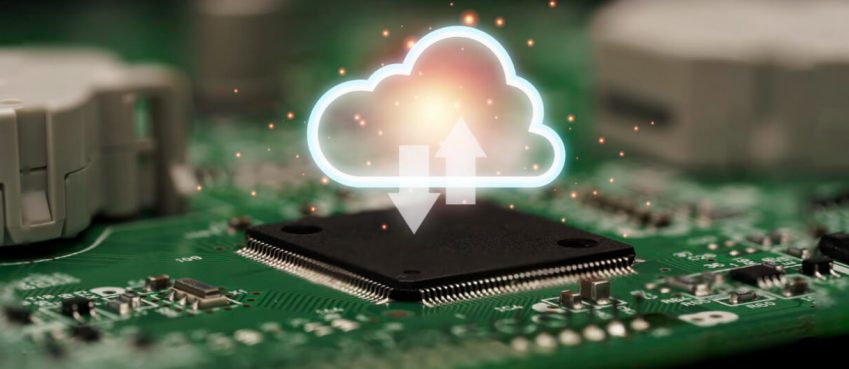
Ethereum, similar to Bitcoin and other cryptocurrencies, enables digital cash transfers in a secure and global way. All you have to do is enter the recipient’s ENS name or account address, and the payment will go directly to them. Nonetheless, Ethereum has intrinsic value, meaning that it is more than just a payment system. You can code your own cryptocurrency on the blockchain and interact with applications created by other users (they run on their own without any entity controlling them). Projects can advance considerably by using the Ethereum framework, and they have a clear path to monetization.
If you are familiar with the peer-to-peer network, you may have heard about the ERC-20 technical standard and traded/invested in tokens that use it. ERC-20 is an acronym, and it stands for Ethereum Request for Comments 20, a token standard that was proposed back in 2015 by Fabian Vogelsteller. It is relevant above all for smart contracts and smart property. ERC-20 is not a standalone cryptocurrency but a way to interact with and use decentralized applications (DApps) that are built on the Ethereum network. This standard imposes a number of rules and actions that a digital token must follow to produce the expected results.
wETH Allows ETH To Be Universally Compatible Across DApps And Smart Contracts
The Ethereum blockchain became the preferred one for developers of decentralized applications, and with the exponential increase in interest and growth of DApp development, it was crucial to have a technical standard. Hence, ERC-20 was created to give developers a foundation to build applications. Fungible digital tokens live on the Ethereum network, and interacting with them requires the use of Ether (ETH). Given that Ethereum is so prevalent, many exchanges allow you to purchase Ether, but it is recommended to stick to well-known ones like Binance. The best option is to do deep research and collect information, ignoring the trends and hype.
Ethereum’s native token is dissimilar to the ERC-20 token, which raises a problem. It is not possible to convert ERC-20 tokens into Ether or vice versa, so you are merely exchanging them for ETH. The network gave rise to wrapped Ethereum to solve this issue – in other words, to facilitate the trading of ERC-20 tokens and ETH. Wrapped ETH, wETH for short is a way of interacting with Defi protocols and applications via ETH, helping with investment and staking processes. wETH is tethered to the Ethereum price at a 1:1 ratio, which means that the two are indistinguishable with regard to value and investment safety.
Also read: Everything You Need To Know About Drive4WalmartWrapped Tokens Are Not Unique to Ethereum Blockchain
Contrary to popular opinion, wrapped tokens are not representative of the Ethereum platform. Prominent blockchains, such as Bitcoin, Cardano, Solana, and Polkadot, have started to experiment with cryptocurrencies made to work on other blockchains. Let us take the example of Wrapped Bitcoin (WBTC), which is intended to represent Bitcoin on the Ethereum blockchain. It offers the best of both worlds by conveying the value and liquidity of BTC to the dynamic and rapidly evolving world of Defi. Many wrapped cryptocurrencies have thrived on Ethereum, of which mention can be made of Binance Smart Chain (BSC) which is gaining attention with Defi applications.
Wrapped tokens are like stablecoins to a certain extent in the sense that they are profitable creations that stem from crypto development. Stablecoins are collateralized at a 1:1 ratio, meaning that if there are one million tokens in circulation, there should be at least $1 in cash reserves. Stablecoins can be redeemed for fiat currencies at any given time. Just like ERC-20 tokens, stablecoins have a global reach, are fully auditable, and are interoperable with the rest of the Ethereum network. The best way to understand it is to experience it.
wETH Is Created by Sending ETH Tokens into A Smart Contract
Changing Ether so that it is in conformity with the ERC-20 standard is too expensive and disruptive for the Ethereum network, which is why it is best for ETH to be converted into wETH and then deployed in DApps that support ERC-20 tokens. If you have an Ethereum blockchain-supported wallet, go to a decentralized exchange and swap ETH for wETH. A smart contract mints a wETH token, backed by an ETH token submitted for the transaction. wETH can be unwrapped via a straightforward procedure, namely sending the wETH token back to the smart contract on the Ethereum blockchain.
wETH can be utilized for various Defi applications, including but not limited to Uniswap, Aave, and Kyber Network, to name a few. You cannot pay for gas fees on the network, yet you have access to more investment and staking opportunities on DApps, allowing for transactions without requiring the involvement of third parties. wETH is slightly more affordable as compared to ETH, meaning that you will save a little bit of gas. Suppose the wETH is transformed back into ETH. In that case, the wrapped token is removed from circulation, which is done to make sure that it remains pegged to the value of Ether at all times.
What Does The Future Hold For wETH?
Eventually, Ethereum’s codebase will be updated so that it becomes ERC-20 compliant, eliminating the need to wrap Ether for the goal of blockchain interoperability. wETH tokens can enhance capital efficiency and liquidity on other networks, so you can retain Ethereum exposure while taking part in yield farming opportunities on, say, the Solana network. It is just an example. For the time being, wrapped Ethereum ensures an invaluable solution to the platform’s interoperability issues, so it is not going away any time soon. The future for wETH is looking bright as more and more DApps are developed.
Solutions are being developed to attempt to make bridging between blockchain networks easier and more efficient. One possible solution is the creation of a bridging hub, which works just like the bridges we know in the physical world. Darwinia, for instance, provides a low-level cross-chain solution for Evolution Land, the first Metaverse game. It is built on Substrate. Until we find an efficient solution for crypto interoperability, wrapped tokens are here to stay.
Top 10 News
-
01
Top 10 Deep Learning Multimodal Models & Their Uses
Tuesday August 12, 2025
-
02
10 Google AI Mode Facts That Every SEOs Should Know (And Wha...
Friday July 4, 2025
-
03
Top 10 visionOS 26 Features & Announcement (With Video)
Thursday June 12, 2025
-
04
Top 10 Veo 3 AI Video Generators in 2025 (Compared & Te...
Tuesday June 10, 2025
-
05
Top 10 AI GPUs That Can Increase Work Productivity By 30% (W...
Wednesday May 28, 2025
-
06
[10 BEST] AI Influencer Generator Apps Trending Right Now
Monday March 17, 2025
-
07
The 10 Best Companies Providing Electric Fencing For Busines...
Tuesday March 11, 2025
-
08
Top 10 Social Security Fairness Act Benefits In 2025
Wednesday March 5, 2025
-
09
Top 10 AI Infrastructure Companies In The World
Tuesday February 11, 2025
-
10
What Are Top 10 Blood Thinners To Minimize Heart Disease?
Wednesday January 22, 2025







